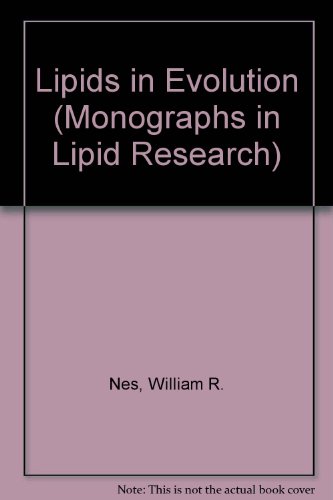Background
Nes, William Robert was born on May 16, 1926 in Oxford, England.


(A turning point seems to have been reached recently in ou...)
A turning point seems to have been reached recently in our understanding of biological systems. After about 1930, when it became possible to examine the dynamic aspects of a cell seriously and to increase the breadth of our knowledge of the chemicals which are involved, there was a feeling that the elucidation of a pathway or the use to which a compound or a process was put biologically had a ubiquitous character. Among the reasons for believing this was the constancy of the amino acid building blocks for proteins. Not only were the same general structures found regardless of organismic type, but the stereochemistry was the same. This sort of observation led to the idea of the "unity of nature. " Few people, of course, thought a complete unity existed, because it was already known in the latter part of the nineteenth century that the sterols, the polysaccharides, and the pigments of various organisms could be substantially different, but only recently, during the last decade or so, has the fuH scope ofthe difference-as weil as ofthe similarity-begun to emerge. Of particular importance, it has now become evident that a large hiatus exists between some types of organism. Even more important, perhaps, and certainly more unexpected, are the substantial gaps which have been discovered within otherwise similar organisms. The evolutionary process is presumably behind what we observe, and therefore an understanding of the rules and regulations which govern similarity and difference should eventually lead to an elucidation of evolution itself.
http://www.amazon.com/gp/product/0306403935/?tag=2022091-20
Nes, William Robert was born on May 16, 1926 in Oxford, England.
Bachelor, University Oklahoma, 1946. Doctor of Philosophy, University Virginia, 1950. Postgraduate, Princeton University, 1954.
Postgraduate, Cancer Institute Heidelberg, 1955. Postgraduate, University Wales, Swansea, 1956.
Fellow Mayo Foundation, Rochester, Minnesota, 1950-1951. Member staff National Institute Arthritis and Metabolic Diseases, Bethesda, Maryland, 1951-1958. Director training program for steroid biochemistry Worcester Foundation for Experimental Biology, Shrewsbury, Massachusetts, 1958-1964.
Associate professor biochemistry Clark University, 1958-1964. Professor chemistry and pharmaceutical chemistry University Mississippi, 1964-1967. W.L. Obold professor biological science, director Institute Population Studies, Drexel University, Philadelphia, 1967-1988.
Visiting professor obstetrics-gynecology Hahnemann Medical College, 1970-1987. Participating scientist Franklin Institute Research Laboratories, 1971-1984. Consultant to industry.
Member metropolitan biological panel National Science Foundation, 1966-1969. Member steroid drug panel Food and Drug Administration, 1974. Member physiological chemistry study section National Institutes of Health, 1979-1981, 84-87, ad hoc member endocrinology study section, 1987, chairman special study section, 1983, member, 1984.
Member fellowship evaluation panel in biochemistry and biophysics National Research Council, 1979. Member research and publications committee Norristown State Hospital, 1975-1977.
(A turning point seems to have been reached recently in ou...)
Served to ensign United States Naval Reserve, 1944-1946. Served to lieutenant (junior grade) Reserve. Member American Chemical Society, American Society Biological Chemists, American Association for the Advancement of Science, Endocrine Society, Phytochem.
Society, Society Protozoologists, American Public Health Association, American Oil Chemists' Society.
Son of William Hamilton and Mary Robinson (Lineback) N. (American citizens). Married Estelle Jeanne Shirley, May 16, 1946. Children: Shirley Anne, William David.
